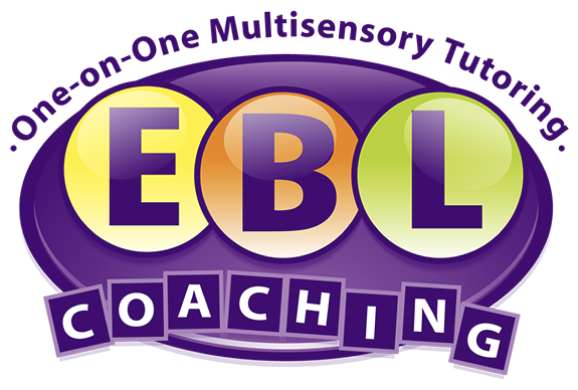A Schedule That Works
A Schedule That Works
Keeping our kids organized can lead to school success
By: Dr. Emily Levy
(Originally published in Parent Guide Magazine, March 2006)

Does your child’s backpack look like the bottom of a dirty trash can? Does he conveniently “forget” to write down or complete homework assignments? Or, better yet, does he complete his assignments and accidentally forget to turn them in the next day?
If you answered yes to any of these questions, then your child may be in need of some organizational coaching. As students advance through school, the organizational demands placed on them become progressively greater. More and more information is presented, homework loads rise, and at-home projects become increasingly prevalent. Without the right types of organizational tools in place, it is easy for a child to feel overwhelmed and sometimes lost in this plethora of demands.
By utilizing the following organizational tools, your child will learn a systematic approach for all homework, class notes, tests, and quizzes that may come his way. While encouraging independence, you should show your child how to implement these strategies to help carve the path for organizational success.
1. Homework Assignments. Remembering to write down specific assignments, break down long-term projects, and turn in homework on time can be some of the most difficult organizational tasks. For many students, learning the right strategies for homework organization can help lead to academic success.
For starters, make sure that your child is using an assignment book on a regular basis. Ideally, the assignment book should have dates pre-written in it and should contain enough space for each day where your child can write in all homework assignments, tests, and even after school activities. Before the week begins, have your child divide each day in the assignment book into five columns: ET (Estimated Time), AT (Actual Time), O (Order), D (Done), and Assignment (by far the largest column).
At school, the only place where your child should write any information is in the last column which reads “Assignment.” For example, in that column, he might write “Math, complete pages 24-26 in text book,” and underneath that, “English, complete five-paragraph essay,” and so on. Then, when he gets home from school and sits down to do his homework, he should read each assignment and predict how much time he thinks each one will take. He should list these times under the “ET” column. For example, he might think his math assignment will take 30 minutes (he writes 30m) and his English assignment will take one hour (he writes 1hr). Next, he decides which order he wants to do the assignments. He can choose to do either the shorter or longer ones first, and will order the assignments 1, 2, 3, etc. underneath the “O” column accordingly. He will then complete each assignment in his designated order and write the actual amount of time it took to complete the assignments under the “AT” column.
Typically, when a child first begins using this strategy, there is a big discrepancy between the actual and estimated time (ET and AT) for each assignment. The more he uses this strategy, however, the more realistic he will become with his time and the closer these two times will start to merge. Finally, when he has completed all assignments and puts them away in the proper folder in his backpack (this is a very important step!), he places a check under the appropriate “D” columns. This is a dynamic strategy which helps build homework, time management, and, of course, overall organizational skills.
2. Notebook Organization. Alas, the notebook! You may notice that your child begins the school year with a well-organized set of color coded notebooks and folders, only to see the famous “trashcan backpack” emerge shortly after the year begins. Some students choose not to even attempt to create any sort of system, since they feel at a permanent organizational loss. Finding the right system for notebook organization, however, can be the secret tool for success in this arena.
Many students have thrived using the three-tier notebook organization system, which is composed of the following three parts: working notebook, reserve notebook, and long-term filing drawer.
The Working Notebook. This is the notebook that should be taken to school on a regular basis. It can be set up in the form of one three-ring binder with separate tabs for each class. Alternatively, it can take the form of one color-coded spiral notebook (for taking notes) and one folder (for handouts and homework) for each class. What is most important about the working notebook, however, is that it only contains papers that your child absolutely needs to be carrying with him to school. One day per week (you should help your child choose this day and have him write it directly in his assignment book each week) will be designated as his clean-out-my-working-notebook-day. On this day, he will clean out all papers that he no longer needs to take to school with him and file them in his reserve notebook.
The Reserve Notebook. The reserve notebook should actually take the form of a large, multi-section accordion folder. For each class, there will be three sections in the accordion folder: one for homework, one for class notes, and one for tests or quizzes. For example, for math, your child would have sections labeled “math homework,” “math class notes,” and “math tests/quizzes.” He would have similar sections for English, Science, Social Studies, and all other classes. Remember that the working notebook should be cleaned out and transferred to the reserve notebook on a weekly basis.
The Long-Term Filing Drawer. At the end of the semester or school year, if your child has written a stellar essay, completed a notable project, or scored sky-high on a particular exam, you may want to save this work for the long-run. This information should be placed into a filing drawer for long-term safekeeping (you should be in charge of this drawer).
Other organizational strategies that you may want to implement include setting up a regular space for your child to complete his homework with easy access to (well-organized) supplies. You may want to encourage your child to work on his homework at a consistent time of day: for example, as soon as he comes home from school or right before dinner. You can also include some incentives, at least at the beginning, for regularly following and maintaining these organizational systems. If your child still faces organizational issues even with these tools in place, there is always one-on-one coaching and small group clinics to help create individualized organizational tools.
Remember that organization is one of the most important facets of school success. The earlier you teach your child these tools, the easier it will be for him to implement and maintain them as he progresses through school. Try out these tools and help your child begin his journey to organizational success!
Emily Levy is the founder and director of EBL Coaching, located at www.eblcoaching.com, which offers one-on-one and small group tutoring and organizational coaching.
